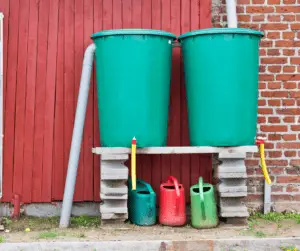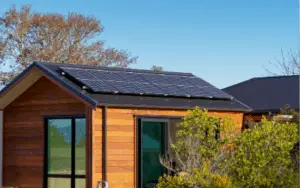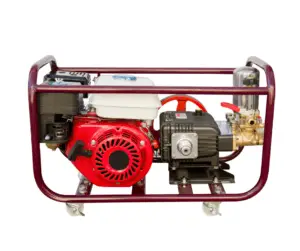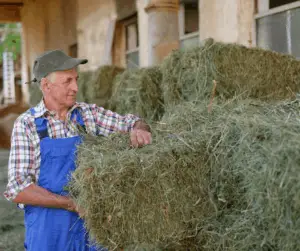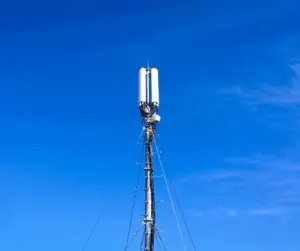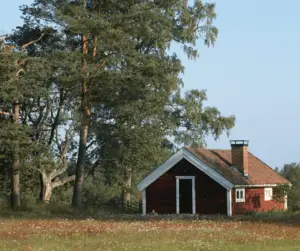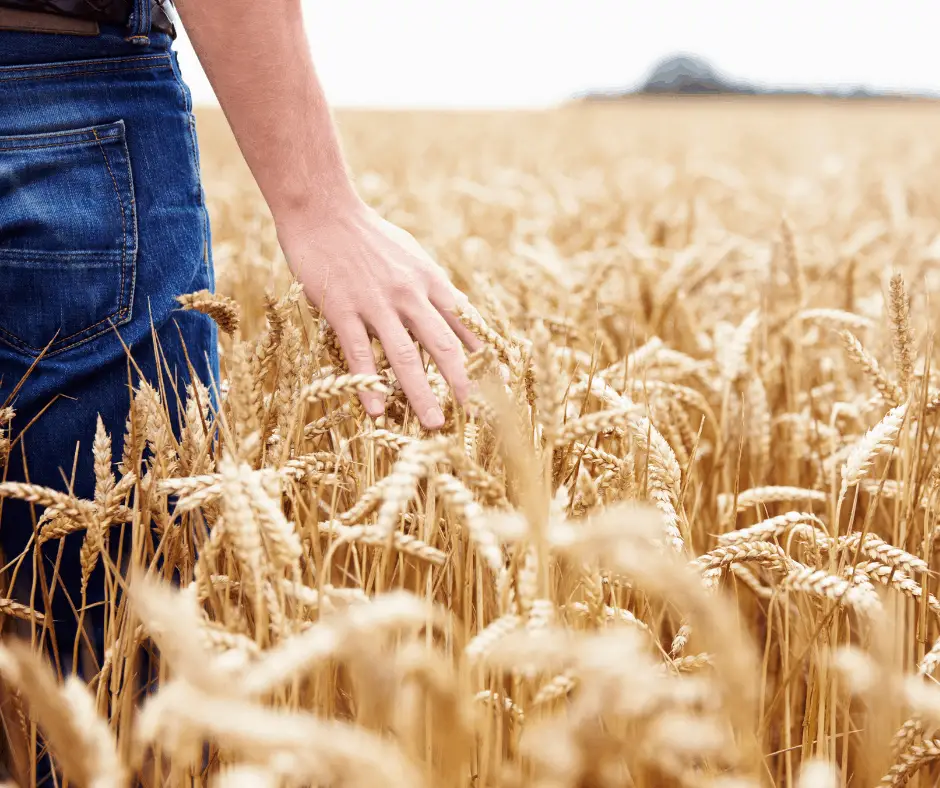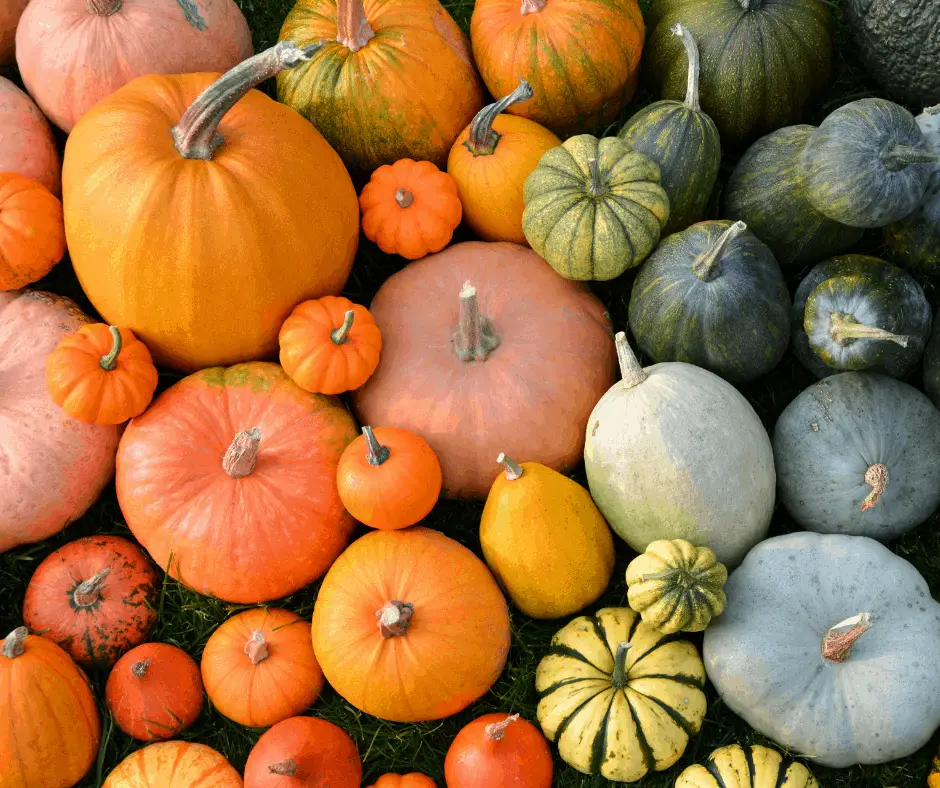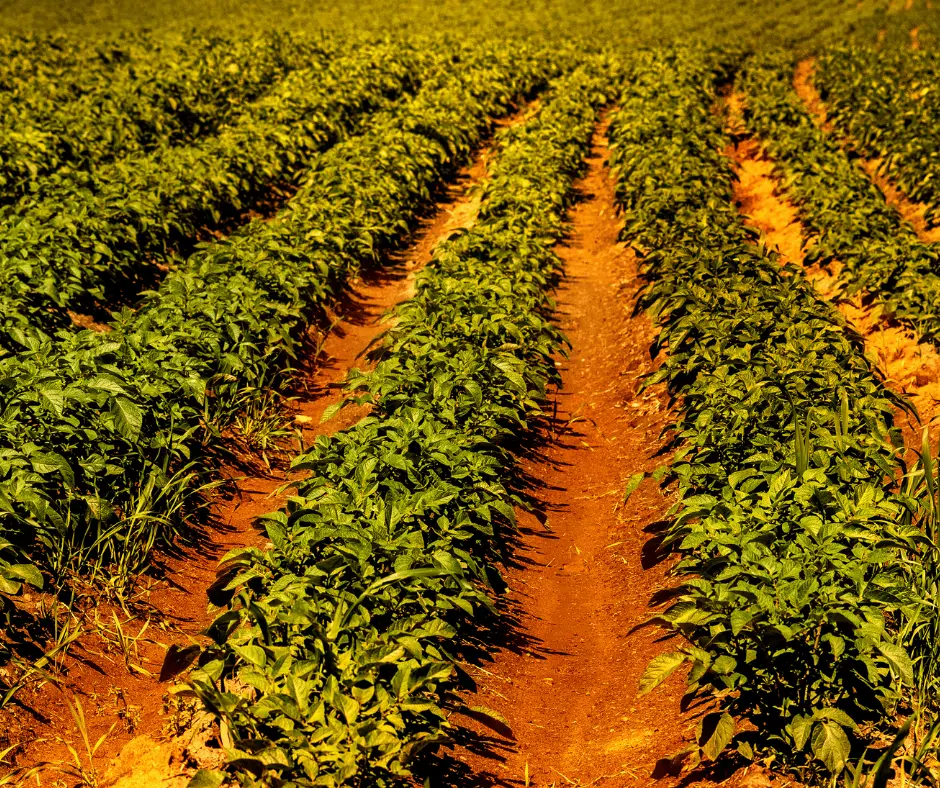If you want a successful homestead in the desert, then there are a few things you should know beforehand.
Homesteading has become astronomically more popular in the past few years than ever before, and there are many people building homesteads right in the middle of the desert.

I’ve grown on this idea, as it’s hard not to love the aesthetics of the large mountains and vast flat nature of the desert.
The challenge of maintaining a homestead in a desert is also tempting to me, but I can certainly see why it can seem like an impossible task for some people.
This is why I’ve created this guide so that anyone interested in homesteading in the desert can do so with an upper hand of knowledge.
I’m going to cover the essential aspects, such as water, power, livestock, and gardening, to name a few; let’s get into it now.
How to Homestead in the Desert
Water
Rainwater Harvesting
The desert isn’t going to provide much water, but it’s still worth investing in at least a smaller rainwater harvesting system.
These work by catching the rainwater and funneling it into a storage tank and are very simple to install.
If you live in an area such as West Texas, you’ll get more water than in Arizona, so whether or not it’s useful depends on the climate of the desert the homestead is in.
It’s worth it even for merely providing water for baths, dishwashing, or watering the garden; this way, you do not use the precious well water or water that’s been imported.
Water Well
Water wells work by pulling up water from underneath the crust of the earth called water tables.
I’ve used water wells for most of my life, and I’ve realized that they’re virtually the best way to source water.
Deserts also have water tables, and depending on the nature of the desert, it may provide enough water so that other sourcing methods are not needed.
If you can work it within your means, it’s still worthwhile even if it won’t be your primary supply, as it could be used to water the livestock, for example.
Water Storage
After you have begun sourcing the water, whether it be via rainwater harvesting systems or water wells, it’s time to place it into storage.
Typically, there isn’t much preparation required to store water, but because of the extreme heat in the desert, this is the case.
You’ll need to build a shed that has plenty of airflow.
If possible, make a shelter over the existing cover to block out the sunlight; this way, the original shelter is not getting beat down directly from the sun.
Electricity
Solar Panels
Since homesteading is meant to be entirely off-grid, you’ll need to source electricity locally. The best inarguable way to do this is by using solar panels.
The technology in solar energy has moved forward at incredible rates, and they’re now more efficient, more so than ever before.
A considerable benefit of having solar panels in the desert is that it’s virtually sunny every day.
The sun will also have incredible amounts of UV rays, making it nearly the perfect environment for harnessing energy from the sun.
It’ll require an investment, sure. But you’ll save an incredible amount of money by using solar panels, and they’ll pay for themselves in no time.
Generators
Suppose you would rather live a lifestyle which doesn’t require much electricity, if this is the case, then generators are great.
They can be very inexpensive, and most smaller ones can easily power a smaller home.
There are several types of generators, such as gas, propane, and diesel, but if you only think it’ll be used on rare occasions, a gas-operated generator would suit you best.
They’re also great backups too, as it can be used if the solar inverters suddenly die and you’re in desperate need of air-conditioning, for example.
Plus, many are portable, which means you can essentially have power wherever you need it, such as if you’re building a pig pen a few hundred feet away from home.
Power Banks
No matter which choice you elect to use to source electricity, you’re going to need somewhere to store it.
There are many types of power banks; some store the electricity sourced from solar panels; then, others have built-in solar panels.
Some are meant to be charged, then used as backups or for convenience opportunities; check here for one of the better ones.
I’ve used them often, most commonly when I’ve worked with smaller power tools, such as an electric nail gun while building a fence.
They’re great to have as a backup, too, as just like with generators, battery banks make for excellent power backups.
Livestock
Water
If you’re going to have livestock on your property, then you must put a few things in place to ensure their safety from the heat.
The first, which is the most important, is water. The livestock is going to use the water to hydrate, but also to help them cool off.
This is where it’s a make it or break it situation because hot water isn’t going to help an already heated goat.
You’ll need to make sure it’s under shelters that, just like regular water storage, have considerable overheads with plenty of airflow.
If water isn’t in abundance, you could perhaps filter out debris in the water and use animal safe water sterilization tablets; this way, there isn’t a need to dump used water as often.
Food
You’d think that livestock feed isn’t at as much of a risk of being damaged by the heat, and this is partially true.
There is one thing you’ll need to be careful with, though; the risk of the feed becoming dry and brittle.
If this occurs, it runs the risk of losing some of its nutritional value, not to mention it’d be much less appetizing.
You nor I would prefer to eat chips so dry it could crunch into a powder. To avoid this, follow the same steps as you would with water storage.
Lastly, make sure the feed is placed in an airtight container. This could be a barrel, bucket, or even a deep freeze; this will keep it out of sight and out of mind from other wild critters looking for food themselves.
Shelter
The final aspect that is important to pay attention to is the shelter that you’ll be providing to the animals.
In many areas of the nation, a simple overhead net and small overhang are sufficient to keep the livestock cool, depending on the animal or bird. However, in the desert, they’ll need much more shade.
Since heat can make the ground itself hot, you should try to make the overhand up to three times as large as you think you should.
In this area, place their water and feed for the day or week, depending on the rotation schedule.
Some animals crawl into small caves, so depending on the animal, consider digging a small cave-like tunnel into the ground where they can cool off, just if it gets a little bit too hot for them.
Communications
Satellite Internet
Typically I would not include this section in an article of this nature, but I think it’s imperative to stay connected to the city, just if any emergencies happen.
Plus, internet access is extremely convenient. Satellite internet is by far the best option for those of you who are homesteading in the desert, as it needs no towers to get its signal from.
As the name suggests, satellite internet gets Its signal from satellites, so as long as the antenna is pointed towards the sky, it can be placed anywhere.
Smartphones
If you can get a signal, smartphones are a great device to have, even if you’re not into the “techy” stuff. Most smartphones have a mobile hotspot, which is essentially WiFi.
The plans can get very pricey, but if you’re going to use it very sparingly, it’s a great option if you can get adequate cellular reception.
Landlines are typically cheap, and if you live near a road, this may be an option and could replace the need for the internet if you simply want a regular phone.
Otherwise, smartphones will be your best bet, although even if you do not have a cellular signal, you can take advantage of WiFi calling if you have satellite internet.
Cellular Boosters
Since the desert is full of nothing but desert, cellular companies rarely invest in placing towers as there will not be a return on investment.
Luckily, cellular signal waves travel across wide-open spaces very easily, which could mean a cellular booster could pick up the weak signal and make it usable.
Cellular boosters work by finding a signal, and after working its magic, it’ll result in a signal that can be used to place calls, text, or surf the web, depending on the strength of the signal.
Gardening
Soil Quality
If you are planting a garden in the desert, then a vital thing to pay attention to is the soil quality.
If possible, plant the crops in the area with the darkest soil; this is more than likely to provide much better results.
You can also consider regularly placing compost in the garden, as this will not only result in much healthier crops but assist in holding moisture.
Composting can be done by throwing foods, lint, cotton, and other items in a bin and letting them sit. If you do this as a daily routine, you will eventually have plenty of compost.
You should also do a soil test; this way, you can place the crops in the most suitable area on your property.
Shade
In most green areas, such as out south or up north, shade is in abundance. This is not the case in the desert.
This means that you’ll need to create shade either naturally or by building structures.
A great way to do this is by planting trees that can survive in the desert near the garden; this way, when the sun reaches a certain point in the sky, the tree will provide shade for the rest of the day.
You can also build a structure to provide shade and even consider an overhanging net that will decrease the amount of sunlight that will hit the crops directly, which works great.
Best Crops
A garden in the desert is undoubtedly possible, but there is a long list of crops that can withstand this temperature. You want to avoid planting crops that are super sensitive to heat, so I’ve listed ten great crops that are great for the desert, as long as you keep them watered sufficiently.
Top 10 Crops For The Desert for Desert Homesteading
- Squash
- Tomatoes
- Potatoes
- Eggplant
- Lettuce
- Broccoli
- Peas
- Spinach
- Carrots
- Cucumber
Frequently Asked Questions
How Expensive Is Land?
I’ve been looking at land in the united states’ western area for myself, and I’ve found that land is surprisingly inexpensive.
If you take a peek here, you’ll see several listings for land for sale in Arizona for pennies on the dollar.
While homesteading in the desert does come with its challenges, if you’re on a budget, then it could be an excellent option for you.
Where Can I Learn More?
If you would like to learn more about homesteading, the first place to look is our website; we have several articles covering important topics.
Otherwise, something that I regularly recommend is books, because often they are written by experts who’ve lived and breathed this for years.
Another choice is to do a quick search of homesteading youtube channels, of which there is a large abundance.
Which Livestock Are Best For The Desert?
Homesteading in the desert comes with its challenges, and one of those is determining which livestock can sustain well in the heat.
It’s not necessarily about which animal, but rather how the animal lives in terms of shelter, cool water access, and more.
As long as you keep the livestock cool in a shady area and provide fresh, cool water, then the question of which animals are suitable is no different than any other region.
Verdict
If you’ve been interested in homesteading in the desert, or perhaps you already are, but you’re looking for tips, then I hope I’ve provided them for you.
As mentioned before, homesteading can be very challenging in the desert, but only if you’re not prepared.
If you take the tips I’ve given you today, research further, and give it a solid shot; I have no doubt anyone can make it a success.
Be certain to check out a few books and youtube channels; they are worth their weight in gold.
